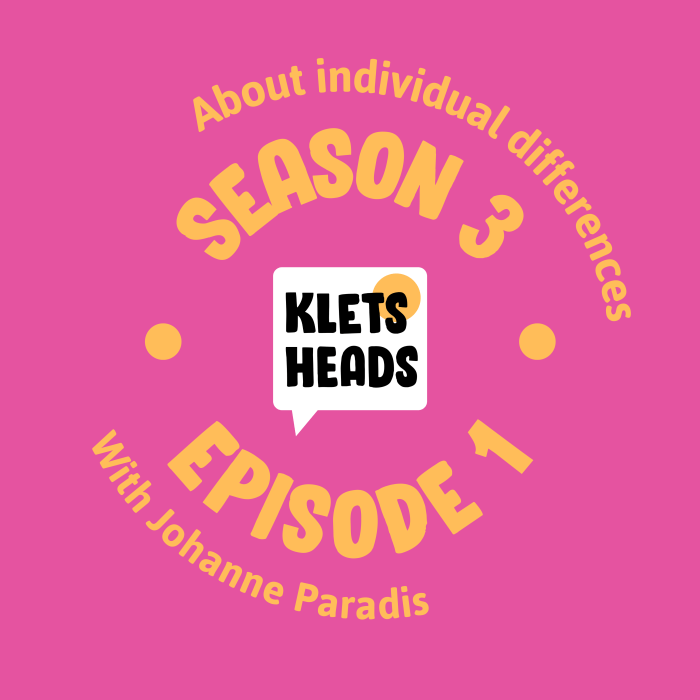Why do some bilingual children end up becoming more bilingual than others? That’s the question we’re answering in this episode of Kletsheads, the first in our third season of the English-language ediition.
Most children become more proficient in one of their languages compared with the other(s). This is often the language spoken at school or the wider community. Some children actively use both languages, but many do not. And in much the same way as we see for learning to walk, or the age at which you lose your first tooth, we also see that some children are quicker to pick up their two languages than others.
Sometimes there are seemingly obvious explanations for all this variation between children, but not always. Sometimes children growing up in apparently very similar circumstances have very different outcomes when it comes to how well or how much their use their two or more languages. What exactly causes these differences? Why do some bilingual children end up being more bilingual than others? And as a parent or professional, is there anything we can do to maximise a child’s chances of becoming as bilingual as possible? To answer these questions, I’m joined by Johanne Paradis, professor at the University of Alberta, Canada.
We heard that there are a whole host of reasons why some bilingual children end up being more bilingual than others. Younger is not always better and that it’s better in the early years to concentrate on the heritage language. Amount and type of input children hear at home is important, and – crucially – research suggests that this especially the case for the heritage language. Extra-curricular activities and friendships involving the heritage language are just two ways in which you can create richer input and increase your child’s chances of becoming and remaining an active bilingual. These are some of the factors that you have (some) control over as a parent, or at least they are things you can change, but there are also factors that impact on children’s bilingual outcomes that you can’t change. Language aptitude is one example of this.
In many instances, if not all, there’s no one-size-fits-all, no one factor that wins out above all others – as Johanne said, it’s often a trade-off. The choices parents make are personal and will depend on individual circumstances, individual children and even the languages in question. What’s crucial, though, is that you’re aware of the potential consequences of the choices you make as a parent or the advice you give as a teacher or parent. I hope this episode will help you make those choices.
In this episode I also shared another Kletsheads Quick and Easy, a concrete tip you put into practice straightaway to make the most of the bilingualism in your family, class or clinic: Find someone to talk to about bilingualism in your family, classroom or practice. If you already know someone, send them a message or email now, or give them a call, and otherwise start thinking today about who you might be able to approach.
Our Kletshead of the week was Reyhan and he was interviewed by Wieke Vink.


Johanne Paradis is Professor in the Department of Linguistics and Adjunct Professor in Communication Sciences and Disorders at the University of Alberta. Her research focuses on bilingualism in children with typical development and in children with developmental disorders, in particular children learning English-as-a-second language from immigrant and refugee families. She is co-author of Dual Language Development & Disorders: A Handbook on Bilingualism and Second Language Learning and she recently wrote an amazing review paper on much of the research she discussed in the podcast. The article is entitled ‘Sources of individual differences in the dual language development of heritage bilinguals’ and is published in the Journal of Child Language. It’s open access, which means that you don’t need to pay to read it. Note, however, that it is an academic paper and hence written for other scholars rather than parents or teachers. You will find the article here.

